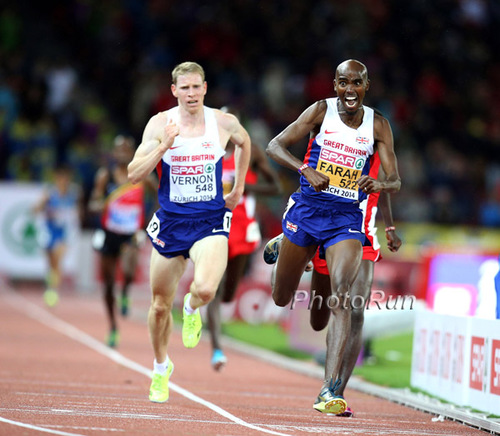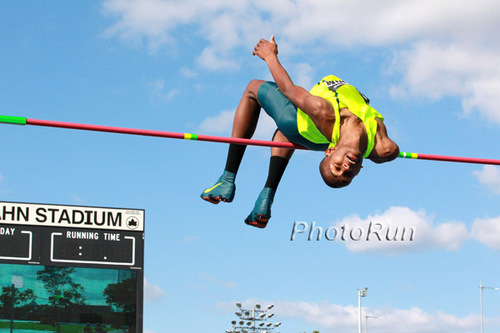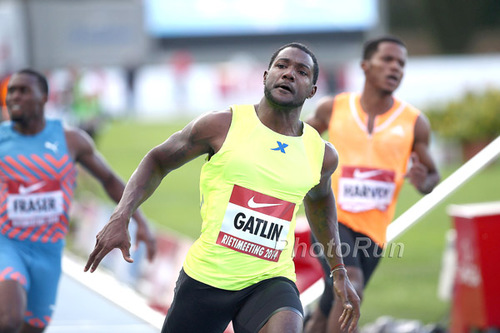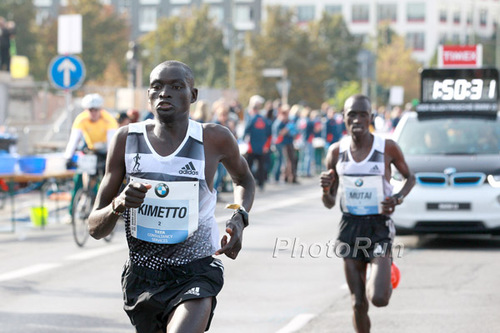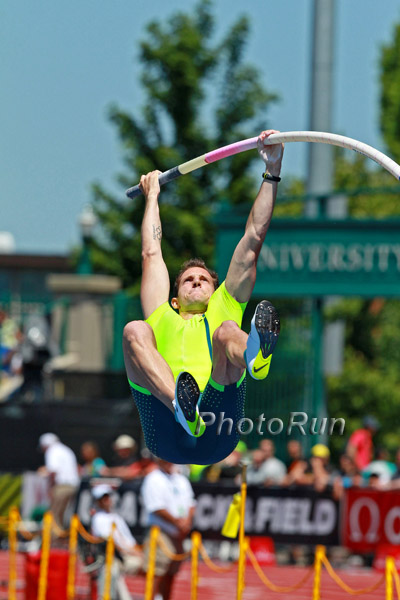So, who will the IAAF name as their Male Athlete of the Year?
David Hunter wrote this piece about the top five Male candidates for the IAAF award for 2014. Tell us what you think. Email us with your candidate!
Email us at runblogrun@gmail.com.
As the weather turns bitter and the year’s end is in sight, it is time to look back on the track & field performances of 2014 and determine who should be honored as the men’s and women’s track & field athletes of the year. In selecting the top athletes of the year, the criteria enunciated years ago by Track & Field News has long been broadly recognized as the Marquess Of Queensberry Rules for evaluating those athletes who posted pinnacle performances and dominated their event during the past year. The three criteria are: (i) Honors won; (ii) Win-loss
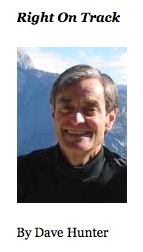
record in head-to-head competition; and (iii) Sequence of marks. These criteria are not evenly weighted. And as T&FN tersely notes, “We reward people who have proven themselves against other people, not against themselves.”
In 2014 – the one year in the track & field 4-year cycle devoid of a global championship – the difficult evaluation process becomes even more challenging. In a year without an Olympics or World Championship, athletes quite often have different plans – some chart a down year, others start a family, some compete in other events, still others have PR objectives that overshadow the purely competitive goals that dominate championship years. The non-championship year diminishes the importance of the “Honors Won” criteria where blockbuster “Honors” are sparse and star-studded competitive fields can be hard to find.
Nonetheless, we soldier onward. And with the T&FN criteria to guide us, let’s look at 5 male athletes who had career-type years and should be in the conversation for the 2014 Men’s Track & Field Athlete of the Year. [A review of the women’s AOY candidates will be forthcoming in future article…]
Mo Farah wins European 10,000m! photo by PhotoRun.net
Mo Farah. What more can you say about the man who is the reigning Olympic and World champion in the 5000m and the 10,000m and who added the 5K and 10K European Championship crowns to his resume in 2014? He is track & field’s fighter – and he is wearing 6 championship belts at once. The lion-hearted spirit of this great distance runner is best evidenced by his record two-mile run in a carefully-staged record-attempt race held last summer in Birmingham at the end of a long season. Heavy-legged through the initial mile, Farah struck out on his own and covered the final mile in 4:00 to win handily, set the outdoor world leading mark, take down Steve Ovett’s British national record of over 30 years, and establish a new European and British two mile record of 8:07.85. While he rarely runs the fastest times, he rarely loses when it counts the most. No one has yet found the Rosetta stone which will reveal the secret strategy to defeat this ferocious competitor in important championship races.
Muttaz Barshim clearing 2.42 in NYC, photo by PhotoRun.net
Muttaz Barshim. In what proved to be the year of the high jump, Barshim jumped the highest of all. The Qatar vertical leaper had the world-leading jump at 2.43m [7’11½”] – #2 on the all-time world list. He made that first attempt clearance in Brussels when it counted the most. In what many consider to be one of the greatest showdowns in the history of the high jump, Barshim’s 2.43m leap propelled him to a come-from-behind victory over Ukraine’s Bohdan Bondarenko – his longtime HJ nemesis. In what is now one of the most exciting current rivalries in track & field, Barshim and Bondarenko squared off in DL competition 6 times in 2014 – each winning 3 times. But in the most critical faceoff, Barshim’s double point victory in the Diamond League finale in Brussels allowed him to eke out the overall DL high jump title. Barshim – with 4 clearances in 2014 higher than 2.40m [7’10½”] – perhaps could have sealed AOY honors at the conclusion of the Brussels gathering had he cleared the new world record height of 2.46m [8’¾”]. Only the slightest calf brush on his 3rd and final attempt prevented Barshim from setting the new global mark. You must think that Barshim – at age 23 and still refining his jump technique and his vertical leap strategies – will yet have other opportunities to take down Javier Sotomayor’s 23 year old world record of 2.45m [8’½”].
Justin Gatlin, Rieti 2014, photo by PhotoRun.net
Justin Gatlin. The 32 year old American sprinter had a fabulous year. Undefeated in the 100m and the 200m, Gatlin was the world leader in both sprints [9.77; 19.68]. He clinched the 100m Diamond League trophy when he dominated the point-weighted final in Brussels and posted the year’s fastest time. An hour later, he came back onto the track to complete history’s greatest one day sprint double when he ran 19.71 to win a non-DL 200m against a loaded field. The enormity of his record double overshadowed the fact that in winning the 200m, Gatlin flat-out buried Panamanian sprint sensation Alonso Edwards – who had copped the Diamond League 200m title the week before in Zurich – by a whopping .55 seconds. This year the former Olympic and World Championship gold medalist raced frequently and ducked no one. And the luster of his 2014 performance should in no way be tarnished by absence of Usain Bolt who basically elected to take a sabbatical this year. While there are loud and influential voices that have proclaimed that the once-suspended sprinter should be forever ineligible for any type of post-season honor, at least an equal number of respected spokespersons have stated that Gatlin – who dutifully served his four year suspension and is certainly regularly tested now – has earned his redemption. Says Ato Boldon, who set the one-day sprint record Gatlin took down: “If this were a young man who had committed a crime and went to jail who had come out and was doing well and appeared to be doing what he needed to do to carry on with his life, we’d say ‘Hey, look at that, that’s great. He’s paid his dues and good for him.'” Track & Field News proclaims, “If someone is eligible to compete, then they’re eligible for post-season honors.” And finally, drug Czar Travis Tygart, USADA chief, candidly explains, “If somebody commits a violation, serves a ban, and comes back to the sport, part of the rule is the idea of redemption.”
Dennis Kimetto, BMW Berlin 2014, photo by PhotoRun.net
Dennis Kimetto. When many consider the relatively inexperienced Kenyan marathoner, they point out that we are looking at the future of the marathon. But given Kimetto’s world record performance in capturing the 2014 Berlin Marathon, perhaps it would be more accurate to say that the future is now. In winning Germany’s World Marathon Major – always a carefully-plotted team assault on the world record – Kimetto displayed a certain poise, patience, and racing strategy that belies the fact that he has engaged in sophisticated, elite training for only about 5 years. His world record clocking of 2:02:57 was a textbook performance: modest negative splits [61:45 / 61:12] coupled with a ruthless, take-no-prisoners surge over the final kilometers. It is the marathoner’s plight that their yearlong body of work is often just one, maybe two performances. Kimetto DNF’d in Boston – but his early departure from the course was prompted by a pre-race strained hamstring. His masterful Berlin race may well be the performance of the year. A marathoner should not be penalized by the fact that the sheer enormity of the event precludes more numerous outings. Kimetto’s eye-opening Berlin victory – where he lowered Wilson Kipsang’s global best by a stunning 26 seconds – is causing many to reformat their answer to the tantalizing question, “Will we see a sub-2 hour marathon in our lifetime?” Fewer are saying, “No.” And more are now offering the rhetorical reply, “How long do you think you will live?”
Renaud Lavillenie, Nike Pre Classic 2014, photo by PhotoRun.net
Renaud Lavillenie. Many thought the men’s AOY honor might have been decided in mid-February in Donetsk when Lavillenie surpassed Sergei Bubka’s 21 year old pole vault record of 6.15m [20’2¼”] with an indoor clearance of 6.16m [20’2½”]. But that was just the start of the French vaulter’s year. The Olympic gold medalist ended his indoor season with the four highest indoor clearances of the year. Outdoors, Lavillenie was equally invincible – posting the 6 highest outdoor clearances of 2014 [his outdoor WL: 6.02m (19’9″)] and easily winning the 2014 Diamond Trophy. How dominant was his overall Diamond League victory? Lavillenie’s DL point total exceeded the aggregate DL points scored by all other Diamond League vaulters combined. LaVillenie was victorious in 13 of 14 outdoor competitions. The only blemish on the new world record holder’s 2014 scorecard was a self-inflicted wound: Lavillenie clumsily no-heighted at the Stockholm gathering – an embarrassing moment that did not interrupt his march to the Diamond League title.
In a non-championship year, the world record performances of Kimetto and Lavillenie seem to lift them above the others. And with no disrespect to Kimetto, Lavillenie’s yearlong pole vault dominance resonates more powerfully than the Kenyan’s singularly magnificent day in late September in Berlin. While both athletes had superlative years, the French vaulter’s credentials for athlete of the year appear to be the stronger.
There is frustration – and beauty – in this annual subjective evaluation. Unlike our sport itself where the athletes who run the fastest, jump the highest, and throw the farthest are the unequivocal winners – most years feature several different track & field athletes who can make persuasive cases for the AOY crown. This dilemma creates the perfect environment for a festive roundtable debate among friends. Consider this: after a cleansing long run, you and your running buddies might retire to a dimly-lit tavern for rehydration and a spirited conversation about track & field’s most worthy 2014 honorees. Inevitably, contrary conclusions will collide. And here’s the where the beauty comes in: while your colleagues can say that your carefully-crafted selections of the athletes of the year are wrong-headed, no one can definitively prove that your conclusions are not correct.
~Dave Hunter

